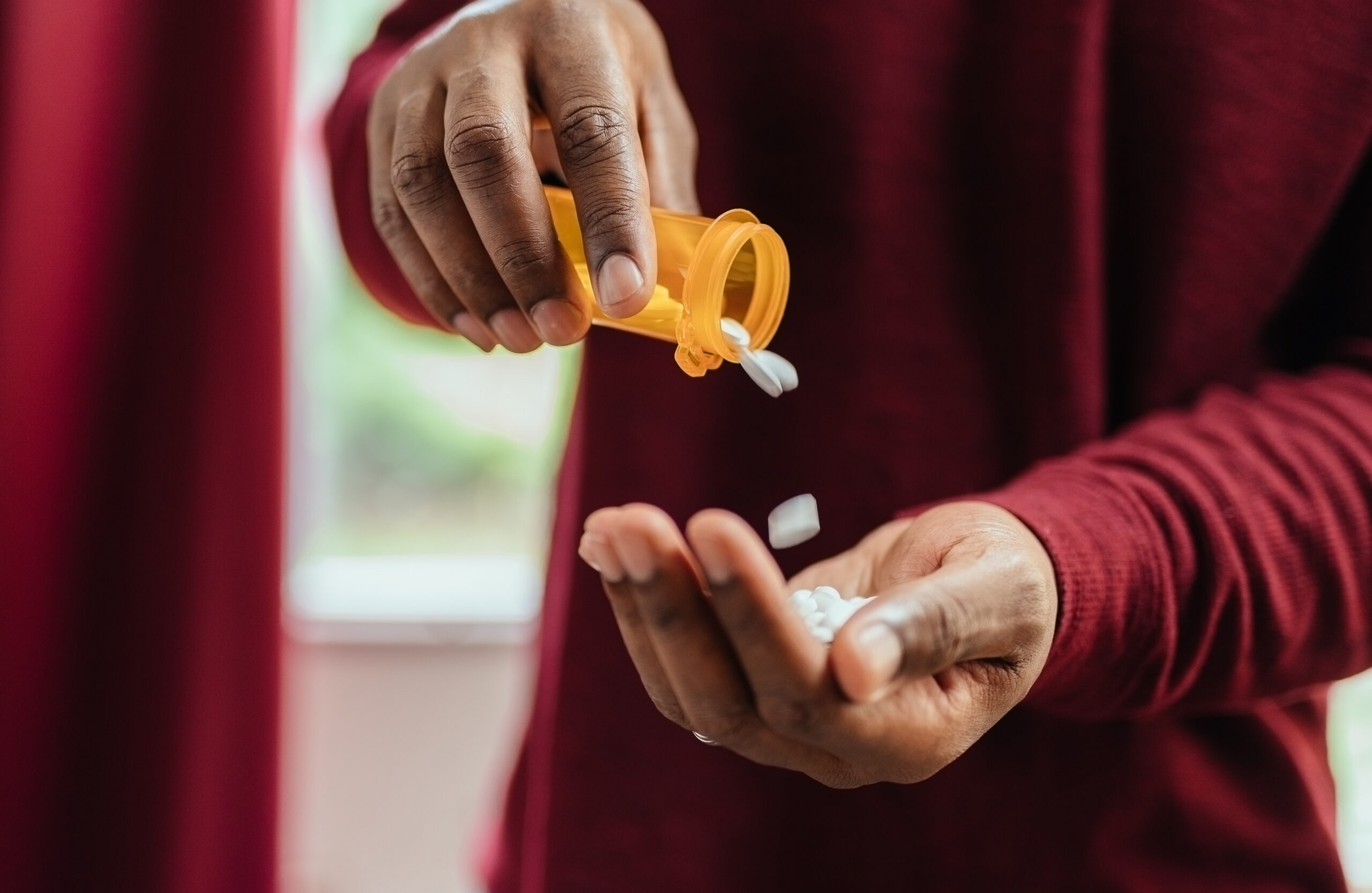
Withdrawal occurs whenever you stop taking long-term opioids. Unfortunately, opioid withdrawal is a difficult and dangerous phase during the recovery process. However, it is the first and arguably most important step in beginning your life of sobriety.
The good news is that opioid withdrawal comes in stages, which means you can know what to anticipate. Furthermore, you can detox from opioids in medical scenarios to ensure you are as safe and comfortable as possible.
Signs of Opioid Withdrawal
Symptoms of opioid withdrawal range from mild to severe. The most common symptoms to expect include:
- Insomnia
- Racing heart
- High blood pressure
- Muscle and bone pain
- Chills
- Anxiety
- Diarrhea
- Sweating
- Nausea and vomiting
- Increased body temperature
If you are experiencing one or more of these symptoms and have stopped using opioids, you are likely experiencing opioid withdrawal.
How Long Does Opioid Withdrawal Last?
How long opioid withdrawal lasts ultimately depends on the opioid in question. Certain opioids have longer withdrawal periods, whereas others have shorter duration symptoms.
For example, short-acting opioids, such as heroin, often cause withdrawal that lasts for about a week. Long-acting opioids, such as methadone, can have withdrawal symptoms that last up to two weeks or longer. So, it’s important to consider the type of opioid in your system in order to determine how long withdrawal will last.
Opioid Detox Timeline
To better understand opioid withdrawal, it’s a good idea to consider an opioid detox timeline. Opioid detox typically has three stages: early, peak, and late. When these stages occur depends on the individual in question and the opioid being used. Let’s take a closer look at each one of these stages, including when they occur and the symptoms.
Early Stage
Individuals will enter into the early stage of opioid withdrawal shortly after the last use of an opioid. You can determine when the early stage will happen using the half-life of the drug. Whenever your body has eliminated half of the drug substance, you will begin craving again, which is the early stage.
Most opioids have a half-life of about a few hours. Oxycodone, for example, has a half-life between 3 and 5 hours. Methadone has a much longer half-life at 8 to 60 hours. Once the half-life has been met, symptoms of early stage opioid withdrawal will begin.
Symptoms of early stage opioid withdrawal include:
- Cravings
- Anxiety
- Frustration
- Physical changes
These symptoms will progressively get worse as time goes on.
Peak Stage
As the opioids continue to leave your body, the symptoms will get worse until they reach the peak stage. The peak stage of opioid withdrawal is whenever symptoms are at their most severe. Most individuals undergo the peak stage between 30 and 72 hours after the last use.
During the peak stage, expect symptoms to be very severe. Some common symptoms include:
- Flu-like symptoms
- Mood changes
- Intense cravings
- Diarrhea
- Vomiting
- Constipation
- Rapid heart rate
- Changes in blood pressure
- Feeling hot or cold
- Sweating
These symptoms will be incredibly powerful during the peak, which is why it’s important to get medical care when undergoing detox for these symptoms.
Late Stage
The late stage occurs after the peak stage. It is whenever the symptoms begin to subside. The late stage reflects the early stage, but you are getting better. Late stage withdrawal typically happens 5 to 10 days after your last use, but the stage may not begin after the 2 week period for long-acting opioids.
Detox Safely with Elysium Healthcare
Opioid withdrawal is incre
Withdrawal occurs whenever you stop taking long-term opioids. Unfortunately, opioid withdrawal is a difficult and dangerous phase during the recovery process. However, it is the first and arguably most important step in beginning your life of sobriety.
The good news is that opioid withdrawal comes in stages, which means you can know what to anticipate. Furthermore, you can detox from opioids in medical scenarios to ensure you are as safe and comfortable as possible.
Signs of Opioid Withdrawal
Symptoms of opioid withdrawal range from mild to severe. The most common symptoms to expect include:
- Insomnia
- Racing heart
- High blood pressure
- Muscle and bone pain
- Chills
- Anxiety
- Diarrhea
- Sweating
- Nausea and vomiting
- Increased body temperature
If you are experiencing one or more of these symptoms and have stopped using opioids, you are likely experiencing opioid withdrawal.
How Long Does Opioid Withdrawal Last?
How long opioid withdrawal lasts ultimately depends on the opioid in question. Certain opioids have longer withdrawal periods, whereas others have shorter duration symptoms.
For example, short-acting opioids, such as heroin, often cause withdrawal that lasts for about a week. Long-acting opioids, such as methadone, can have withdrawal symptoms that last up to two weeks or longer. So, it’s important to consider the type of opioid in your system in order to determine how long withdrawal will last.
Opioid Detox Timeline
To better understand opioid withdrawal, it’s a good idea to consider an opioid detox timeline. Opioid detox typically has three stages: early, peak, and late. When these stages occur depends on the individual in question and the opioid being used. Let’s take a closer look at each one of these stages, including when they occur and the symptoms.
Early Stage
Individuals will enter into the early stage of opioid withdrawal shortly after the last use of an opioid. You can determine when the early stage will happen using the half-life of the drug. Whenever your body has eliminated half of the drug substance, you will begin craving again, which is the early stage.
Most opioids have a half-life of about a few hours. Oxycodone, for example, has a half-life between 3 and 5 hours. Methadone has a much longer half-life at 8 to 60 hours. Once the half-life has been met, symptoms of early stage opioid withdrawal will begin.
Symptoms of early stage opioid withdrawal include:
- Cravings
- Anxiety
- Frustration
- Physical changes
These symptoms will progressively get worse as time goes on.
Peak Stage
As the opioids continue to leave your body, the symptoms will get worse until they reach the peak stage. The peak stage of opioid withdrawal is whenever symptoms are at their most severe. Most individuals undergo the peak stage between 30 and 72 hours after the last use.
During the peak stage, expect symptoms to be very severe. Some common symptoms include:
- Flu-like symptoms
- Mood changes
- Intense cravings
- Diarrhea
- Vomiting
- Constipation
- Rapid heart rate
- Changes in blood pressure
- Feeling hot or cold
- Sweating
These symptoms will be incredibly powerful during the peak, which is why it’s important to get medical care when undergoing detox for these symptoms.
Late Stage
The late stage occurs after the peak stage. It is whenever the symptoms begin to subside. The late stage reflects the early stage, but you are getting better. Late stage withdrawal typically happens 5 to 10 days after your last use, but the stage may not begin after the 2 week period for long-acting opioids.
Detox Safely with Elysium Healthcare
Opioid withdrawal is incredibly difficult and painful. Not to mention, is sometimes dangerous due to the severity of the symptoms. Make sure today to detox safely with the help of the professionals at Elysium Healthcare. Contact Elysium Healthcare today to learn more about our medical detox programs.
dibly difficult and painful. Not to mention, is sometimes dangerous due to the severity of the symptoms. Make sure today to detox safely with the help of the professionals at Elysium Healthcare. Contact Elysium Healthcare today to learn more about our medical detox programs.








No comment yet, add your voice below!